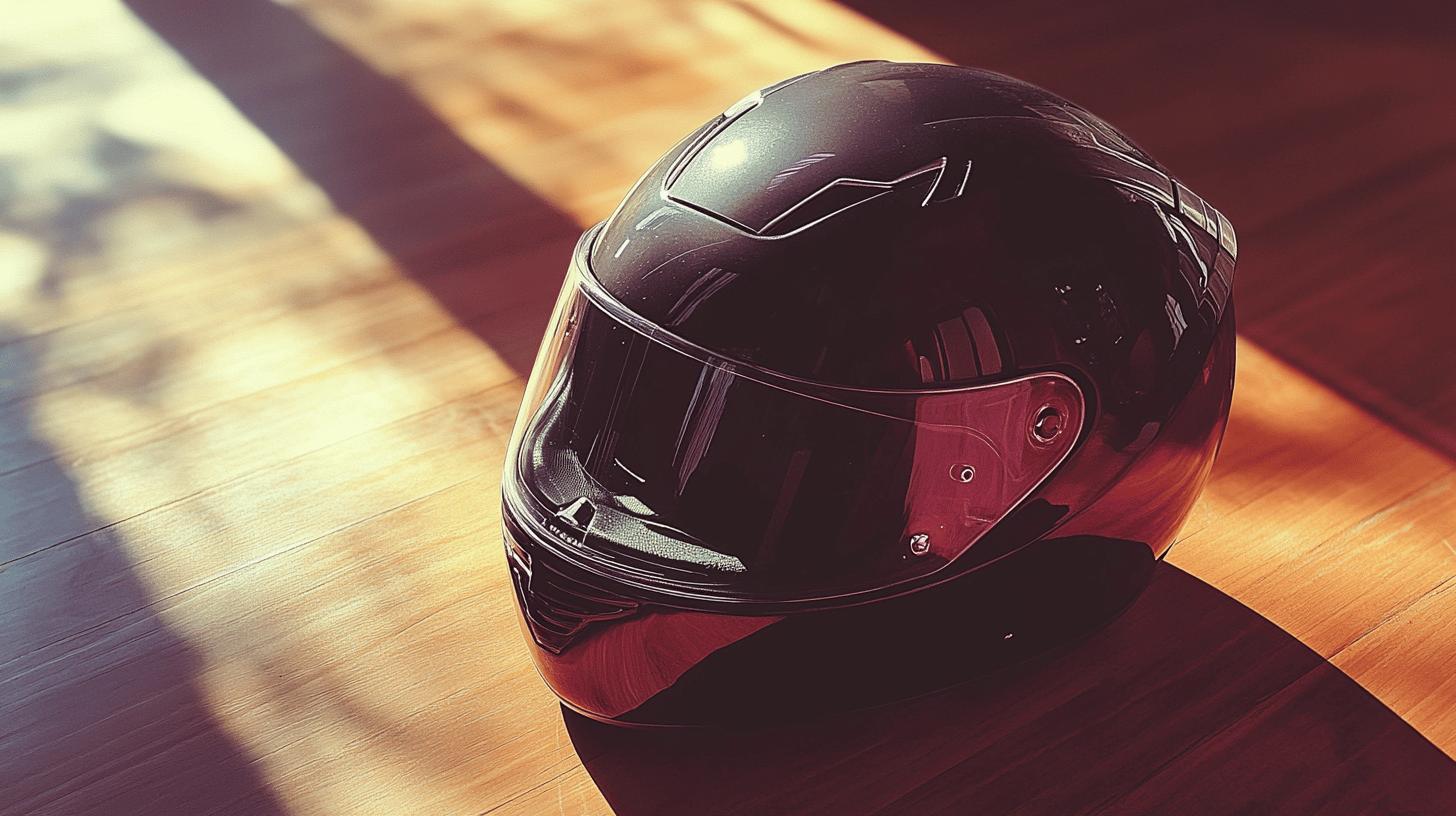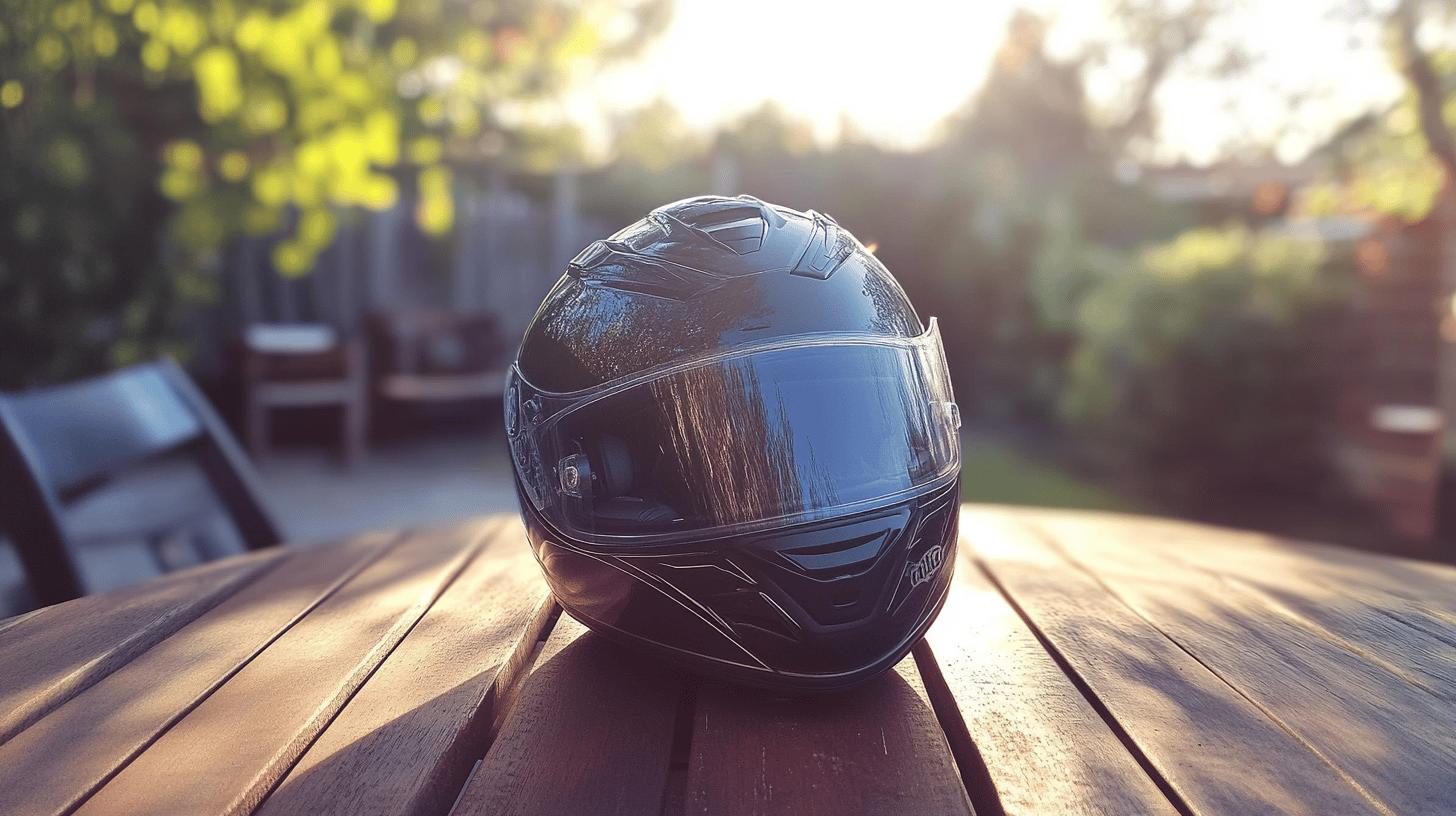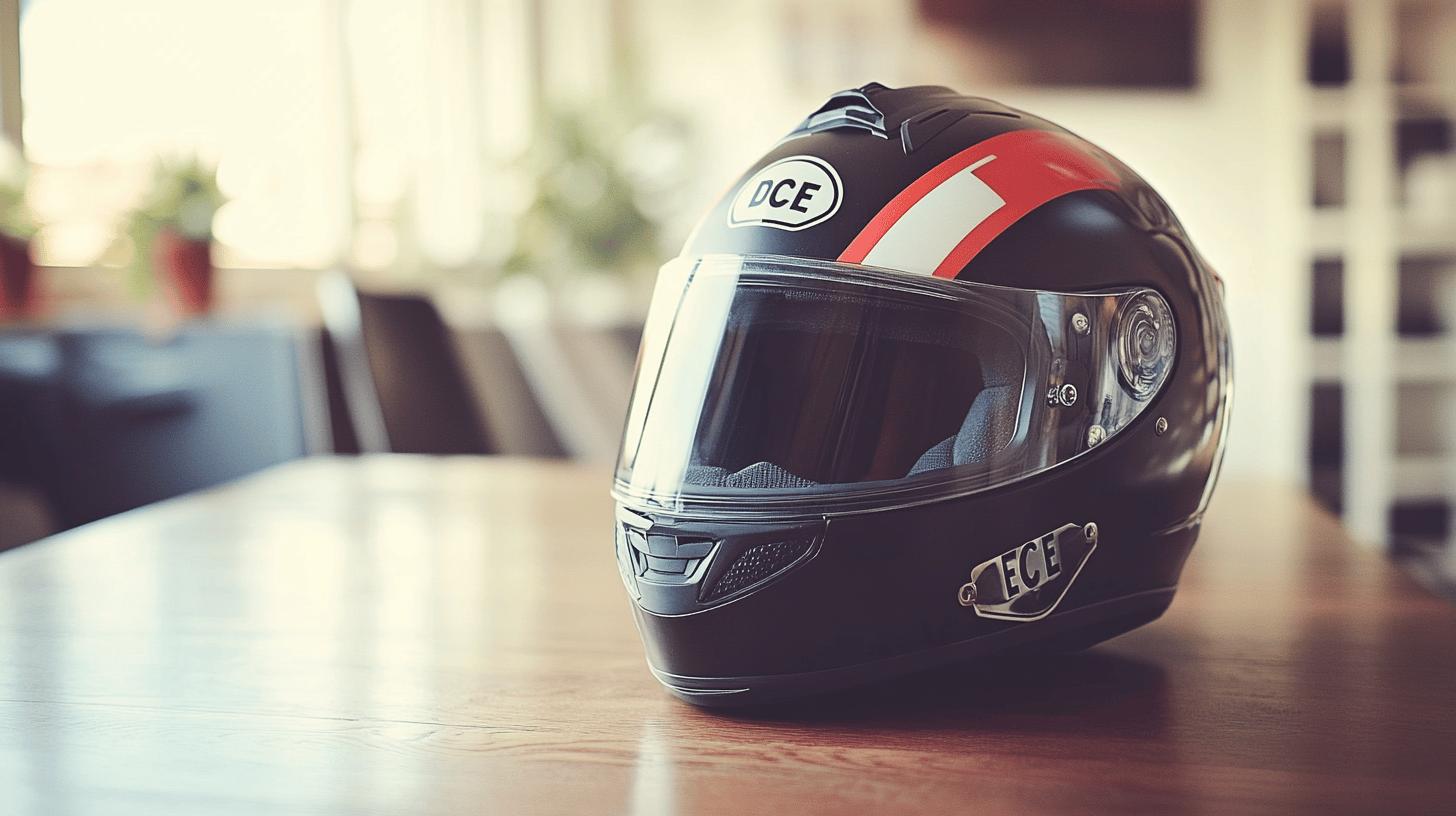Is a motorcycle helmet worth a hefty investment? Consider this: your helmet is your most crucial piece of riding equipment, acting as a potential lifesaver in an accident.
Motorcycle helmet costs can vary widely, spanning a landscape from $200 up to over $1,000, each tier offering distinct features and benefits. Understanding what determines these costs can help riders choose wisely.
Our exploration into helmet price ranges will reveal how features like construction materials, safety standards, and advanced technology contribute to the overall worth of a good motorcycle helmet.
Price Range of Quality Motorcycle Helmets

A good quality motorcycle helmet generally costs between $200 and $800, with some high-end models exceeding $1,000.
Helmets within the $200 to $400 range typically offer solid safety standards and durable construction, making them a practical choice for many riders. These helmets often meet essential safety certifications, ensuring fundamental protection for everyday riding.
As one moves up the price scale, helmets in the $400 to $600 bracket tend to incorporate advanced features such as enhanced comfort padding and improved aerodynamics, catering to those who seek a more comfortable ride without compromising on safety.
Entry-level helmets, priced between $200 and $400, focus primarily on delivering reliable safety and basic comfort. These helmets often include essential protective features, such as impact-resistant shells and comfortable interior linings.
Though they may lack the advanced features of pricier models, they serve as a dependable option for riders who prioritize safety while remaining budget-conscious.
-
Enhanced ventilation systems
-
Aerodynamic designs
-
Improved comfort padding
-
Removable and washable liners
-
Advanced visor mechanisms
High-end helmets, costing $600 and above, boast superior materials like carbon fiber for reduced weight and enhanced protection. These helmets often feature integrated communication systems and superior noise reduction technologies, making them ideal for long-distance touring.
The investment in such helmets is justified by the cutting-edge technology and materials they incorporate, which provide an optimal balance of safety, comfort, and functionality for the discerning rider.
Features That Influence Helmet Costs

What are the key features that impact the cost of motorcycle helmets? Helmets with modular designs, advanced materials like Koroyd, aerodynamic shapes, and integrated communication systems often command higher prices. These features enhance the helmet's functionality and performance, providing additional value to riders who seek more than basic protection.
| Feature | Cost Impact |
|---|---|
| Modular Design | Increases versatility and convenience, typically raising cost. |
| Advanced Materials (Koroyd) | Enhances impact absorption, justifying a higher price tag. |
| Aerodynamic Shape | Reduces wind resistance, improving ride comfort and helmet cost. |
| Integrated Communication | Offers connectivity on the go, adding to the overall expense. |
Safety certifications such as DOT, ECE, and Snell are crucial in determining a helmet's protective capability and can significantly affect pricing. Helmets that meet these standards are often more costly due to the rigorous testing and materials required to pass certification.
User reviews often highlight fit, comfort, and noise levels, which are critical factors in the perceived value of a helmet. A well-fitting helmet that reduces noise can greatly enhance the riding experience, making it a worthy investment for safety-conscious riders.
Comparing Popular Motorcycle Helmet Brands

Brand reputation plays a pivotal role in the selection of motorcycle helmets as it often indicates the level of quality and reliability a rider can expect. Established names like Shoei, Arai, and Bell have built their reputations over decades by consistently producing helmets that meet high safety and performance standards.
These brands are trusted by riders worldwide, and their helmets are renowned for their safety features, durability, and comfort.
Shoei, Arai, and Bell each offer standout models that cater to various rider preferences and needs. The Arai Contour X is a top choice for those seeking a helmet that balances comfort, safety, and build quality.
It's handmade in Japan and boasts a design focused on safety with its round shape. Shoei's Neotec 3, although lacking ECE 22.06 certification, scores high in UK’s SHARP safety ratings, making it a reliable option for safety-conscious riders.
Bell's Race Star DLX Flex is notable for its comfort and ease of maintenance, featuring magnetic padding that simplifies cleaning. Each of these models showcases the brand's commitment to innovation and rider protection.
-
Arai Contour X: Emphasizes safety with a round design
-
Shoei Neotec 3: Highly rated by SHARP for safety
-
Bell Race Star DLX Flex: Magnetic padding for easy maintenance
-
Shoei X15: ECE and Snell certified, though heavier
-
KLIM Krios Pro: Lightweight design with Koroyd technology
User reviews and expert recommendations often highlight the importance of fit, comfort, and noise levels when evaluating helmet quality. Riders frequently praise helmets that offer a snug fit and reduced wind noise, enhancing the overall riding experience.
Experts suggest prioritizing helmets that effectively balance safety features with comfort and affordability. Helmets that meet or exceed safety certifications and provide additional features like advanced ventilation systems are often recommended for both new and experienced riders.
Safety Standards and Certifications for Helmets

How important are safety certifications for motorcycle helmets? Safety certifications such as DOT, ECE, and Snell are pivotal in assessing a helmet's quality and protection capabilities. The Department of Transportation (DOT) certification ensures that a helmet meets the minimum safety standards required for road use in the United States.
The Economic Commission for Europe (ECE) standard is widely respected internationally, involving more rigorous testing procedures, including impact resistance and environmental condition assessments.
The Snell Memorial Foundation offers an even more stringent certification, focusing on advanced safety features and performance under extreme conditions. Each certification guarantees that the helmet has passed specific tests that contribute to rider safety, making them a vital consideration for any rider.
-
Shoei X15: ECE and Snell certified
-
Arai Contour X: Meets multiple safety certifications
-
Schuberth C5: Highly rated for safety and aerodynamics
- Shoei Neotec 3: High safety ratings by SHARP
The differences between these certifications can influence a helmet's safety ratings and its perceived effectiveness in protecting the rider.
For instance, while DOT compliance is mandatory in the U.S., ECE standards are often preferred by international riders for their comprehensive testing approach. Snell certifications are voluntary but highly esteemed for their rigorous standards.
Understanding these differences helps riders make informed decisions about which helmets offer the best protection for their specific needs and riding environments.
Tips for Choosing the Right Motorcycle Helmet

Choosing a motorcycle helmet involves balancing safety, comfort, and cost to find the best value for your needs. How much is a good motorcycle helmet worth? A good helmet typically ranges from $200 to $800, depending on features and brand.
Prioritizing safety certifications such as DOT, ECE, or Snell is essential, as they indicate the helmet's protective capabilities. Comfort is equally important, as a helmet that's uncomfortable can distract from riding.
Consider helmets like the Bell Race Star DLX Flex, which offers magnetic padding for easy maintenance, or the KLIM Krios Pro, known for its lightweight design. These models exemplify the balance of safety, comfort, and functionality.
Fit and comfort are critical factors in helmet selection. A poorly fitting helmet can compromise safety and comfort, leading to an unpleasant riding experience. Ensure the helmet fits snugly without causing pressure points. A secure fit helps maintain stability and focus during rides, while optimal comfort reduces fatigue over long distances.
-
Measure your head circumference to determine the correct size.
-
Try on helmets for at least 10-15 minutes to gauge comfort.
-
Check that the helmet sits level on your head and doesn't tilt forward or backward.
-
Make sure the cheek pads touch your cheeks without causing discomfort.
-
Test the helmet's stability by shaking your head side to side; it should stay in place.
Additional features like ventilation and noise reduction can significantly enhance the riding experience. Ventilation systems help regulate temperature and prevent overheating, especially during long rides in warm weather.
Noise reduction features minimize wind noise, improving focus and reducing fatigue. Helmets with advanced ventilation and noise control, such as those found in high-end models, offer increased comfort and functionality, making them worthwhile investments for frequent riders.
Final Words
Understanding the cost and features of motorcycle helmets is crucial for selecting the right headgear.
Prices range from $200 to $800, with higher-end models providing advanced materials and comfort. Features like safety certifications and fit are vital as well. Reputable brands such as Shoei and Arai offer reliable options.
Prioritizing safety and comfort while considering budget ensures wise investment into the right helmet. Knowing how much is a good motorcycle helmet aids in enhancing both safety and riding enjoyment.
FAQ
What is the average price for a good motorcycle helmet?
A: Good motorcycle helmets generally range from $200 to $800. Premium models may exceed $1,000, offering enhanced materials like carbon fiber and superior noise reduction.
Are expensive motorcycle helmets better?
A: Expensive helmets often include advanced materials and features such as superior safety certifications, aerodynamic designs, and enhanced comfort. However, safety should always be prioritized over price.
What is the best helmet for a motorcycle?
A: The best motorcycle helmet balances safety, comfort, and fit. Brands like Shoei and Arai offer highly rated models such as the Shoei Neotec 3 and Arai Contour X.
Is a 20-year-old helmet still good?
A: A helmet should be replaced every 5-7 years, or immediately if it's involved in a crash. A 20-year-old helmet likely lacks modern safety features and materials.
How much does a helmet cost for a bike?
A: Bicycle helmets typically cost between $30 and $200, depending on design and materials. Higher-end models offer advanced safety features and lightweight constructions.
How much does a football helmet cost?
A: Football helmets usually range from $50 to $400, with top-of-the-line models providing enhanced protection and comfort features.
What are the features of mid-range motorcycle helmets?
A: Mid-range helmets, priced between $400 and $600, typically feature:
- Improved aerodynamics
- Enhanced comfort padding
- Noise reduction technology
- Durable shell materials
- Ventilation systems
What safety certifications should I look for in a motorcycle helmet?
A: Key safety certifications include DOT, ECE, and Snell. These ensure the helmet meets established safety standards for impact resistance and overall protection.
Are Shoei and Arai helmets worth the investment?
A: Shoei and Arai helmets are highly regarded for their blend of safety, comfort, and build quality. Models like the Shoei Neotec 3 and Arai Contour X receive excellent user reviews and safety ratings.
How do I choose the right motorcycle helmet?
A: To choose the right helmet, prioritize safety, comfort, and fit. Consider features like ventilation, noise levels, and compatibility with communication systems. User reviews and expert recommendations can also guide your decision.

Ryan Thompson is a 35-year-old sport bike enthusiast known for his adventurous spirit. With years of weekend rides and exploring new roads, Ryan brings fresh insights and firsthand experience to ProtectiveGearz. His energetic approach and passion for the latest gear make him a trusted source for riders seeking up-to-date advice.



